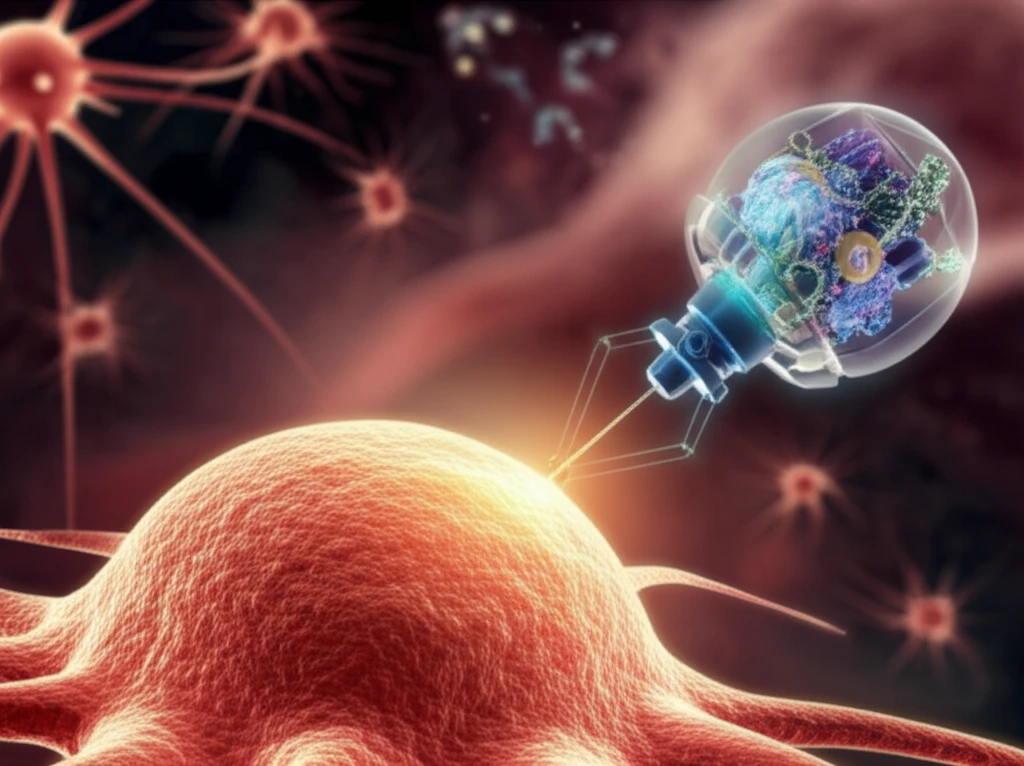
Cancer's New Frontier: How Cutting-Edge Theranostics Are Revolutionizing Treatment
"Combining Diagnostics and Therapy, Theranostics Offers a Personalized Approach to Cancer Care, Promising More Effective and Less Invasive Treatments."
The fight against cancer has entered a new era, marked by the convergence of advanced diagnostic tools and targeted therapies. At the forefront of this revolution is theranostics, a cutting-edge medical approach that combines diagnostic imaging with therapeutic interventions. This innovative strategy allows medical professionals to pinpoint cancer cells with unprecedented accuracy and deliver treatments directly to the tumor site, minimizing harm to healthy tissues.
Unlike traditional cancer treatments that often rely on a one-size-fits-all approach, theranostics offers a personalized treatment plan tailored to each patient's unique condition. This means that doctors can select the most effective treatment options based on the specific characteristics of the tumor, leading to improved outcomes and reduced side effects. This is achieved by using a variety of methods, including antibodies, nanoparticles, and imaging techniques like PET scans.
This article dives deep into the world of theranostics, exploring its underlying principles, the technologies involved, and the significant advancements that are transforming cancer care. By understanding the power of combining diagnostics and therapy, we can gain insights into the future of cancer treatment and the promise of a healthier, brighter future.
Understanding Theranostics: A Symbiotic Approach to Cancer Treatment

Theranostics, a term derived from 'therapy' and 'diagnostics,' represents a paradigm shift in how we approach cancer treatment. At its core, theranostics is a synergistic approach that uses diagnostic tools to identify and characterize cancerous cells and then employs targeted therapies to eliminate them. This integration allows for a more precise, effective, and personalized treatment strategy.
- Improved Accuracy: Theranostics offers more precise targeting of cancer cells, reducing damage to healthy tissues.
- Personalized Treatment: Treatments are tailored to each patient's unique tumor characteristics, leading to better outcomes.
- Early Detection: Advanced imaging techniques allow for the early detection of cancer, improving the chances of successful treatment.
- Real-time Monitoring: Imaging tools enable doctors to monitor the effectiveness of treatments in real-time, allowing for adjustments as needed.
- Reduced Side Effects: Targeted therapies minimize side effects, leading to a better quality of life for patients.
The Future of Cancer Care: Embracing Theranostics
Theranostics represents a pivotal advancement in cancer care, offering hope for more effective and personalized treatments. As research continues and technologies evolve, theranostics is poised to revolutionize the way we diagnose and treat cancer, paving the way for a healthier future for millions around the globe. Embrace the promise of theranostics and its potential to transform the landscape of cancer care, offering hope and improved outcomes for patients worldwide.
